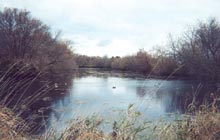 |
||||
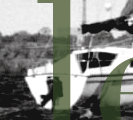 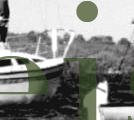 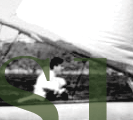 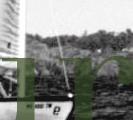  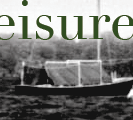 |
||||
(duck hunt, cont.) Wisconsin is no slouch when it comes to Ducks Unlimited membership. In 2003, Wisconsin was first in grassroots income, total members and total sponsors in the U.S. Ducks Unlimited does an enormous amount of good in Wisconsin. They helped conserve more than 68,000 acres of wetlands in Wisconsin last year and according to Van Horn, the “major concern with waterfowl is habitat.” “When agriculture and politics change, it has a major impact on breeding waterfowl,” Van Horn said. “There has been a lot of progress, a lot of conservation. There are programs to set aside wetlands, but they can be temporary. In the long run, we need to protect the breeding habitats.” A breeding habitat is exactly what Wisconsin is. The state falls in the Mississippi flyway, an area that consists of 14 states and three Canadian provinces, and Wisconsin is part of the production section of the flyway. The states to the south provide migration habitats, but Wisconsin provides essential breeding grounds, which is why Nels is committed to DU. “That is where my commitment is right now, to Ducks Unlimited,” Nels said. “I do a lot of volunteer work because I think what they do is important. I know that 86 cents out of every dollar hits the ground and that is what it’s all about. More habitats mean more birds in the air, not just ducks.” This is no Nintendo duck hunt. Forget the crystal clear, blue skies and serene setting. With a brisk, light breeze blowing out of the southwest and a light drizzle coming down, the duck gods could not have provided better weather for the morning hunt. “It’s perfect weather,” Ty said as the rainy, overcast and windy conditions pushed migrating ducks south. It also helps ducks stay on the move in the area. On a nice day, a duck will sit on a pond until it needs to feed about mid-day. But on a day like today, they tend to hop from pond-to-pond. Ty and I sat motionless, not saying much as we scanned the sky looking for ducks. Duck hunters keep their faces down as much as possible, as it only takes a little white face to cause a duck to “flare off,” hence the need for a hiding spot and camouflage. Duck hunting is like a giant game of cat and mouse, with the hunter inviting the duck to fly in, all while convincing it the hunter does not exist. But it also draws similarities to deer hunting. “You’ve got to find a good spot,” Ty said. Unfortunately, it appeared we were not alone. Ty spotted another decoy at the north end of the pond, a spinner. He is not particularly fond of these decoys; he feels they scare ducks off more than draw them in. Despite Ty’s reservations and blind battling with the other hunter, we finally got our first shot of the morning. At about 7:45 a.m. a pair of mallards came in low over the water, heading right toward us. Ducks land into the wind and our position on the pond was almost perfect. Duck hunting requires you to not only be patient, but it also requires a quick, accurate shot. Ty snapped up and fired, hitting a mallard hen, just as it was about to touch down. Nels missed his shot on the drake mallard and it broke off right above our heads. “You see that?” Ty asked excitedly. “That duck was all spread out and had its skids down and ready to land.” Then the fun began, as Mack exploded into the water in search of the fallen duck.
|
|||
|
|||
|
|||
